 The Wavemaster Cube sold quite well in a simple retro design, but always only foiled, bland black or white on a body of boring MDF? With the new Wavemaster Cube Neo, the manufacturer now offers a worthy successor, but not only the optics have changed decisively.
The Wavemaster Cube sold quite well in a simple retro design, but always only foiled, bland black or white on a body of boring MDF? With the new Wavemaster Cube Neo, the manufacturer now offers a worthy successor, but not only the optics have changed decisively.
That you have adapted somewhat to the mainstream, well. That must have come at some point. But you have also added the complete electronics including the power supply with a completely overhauled and significantly more features. What I am personally pleased about is the fact that Wavemaster has added exactly the features I wanted in the Cube review at the time.
Although the designer may have overstepped the mark from time to time, this can certainly be hurt in the end, because all in all, there are a few quite useful journeymen. But of course we do not want to hide that in the review. Because where there is light… so exactly playing with the shadow.
Scope of delivery and unboxing
But let's unpack the story first, because I was a little curious about what's in the box next to Chinese air so much boxes and accessories. In addition to the actual pair of boxes (active, passive), there is also the power connection cable, a 3.5mm jack cable, a connection cable from RCA to the 3.5mm jack and a two-wire connection cable for the left, passive speaker including tinned Ends.
In addition, this time you get a rather neat and stable-looking remote control with batteries and a small manual. That's it, and instead of the jack cable, you might have preferred to have an optical cable. because to connect the speakers to a 3.5mm jack output, you could have connected the RCA cable the other way around, because the Cube Neo can do both. What a pity.
Optics, haptics and functionality
In principle, the design hasnot changed much when you look at the design language in this way. For this, the material of the body is a special one. The Supplier from Wavemaster relies on bamboo for this model. But stop, aren't the bamboo pipes hollow and round? To solve this problem, the bamboo is split, softened, smoothed and then glued back into plates in longer fiber sections. In other words, MDF from renewable raw materials. This is even so good that you can press a somewhat torsion-stiff, but at least almost ultra-light unibody.
I measured a maximum thickness of the rear wall of only 0.9 cm. Which is surprisingly thin-walled, because a comparable body made of MDF is usually significantly stronger than 1 cm. Good conventional boxes already have 1.9 cm and more, but then they weigh three to four times. The passive box brought only 2520 grams to the laboratory wage, the active right counterpart then 2742 grams.
The cover of the low/midrange and the tweeter are also still made of black coated perforated metal. This, in turn, is good for families with small offspring, because I want to better hide the losses I have already been able to make through overly curious and nimble toddler fingers. Then i'd rather have a closed event.
These covers are also thick enough in terms of material to withstand a not too violent shock with flying colours. But they just can't be taken off like that. By the way, the two chassis are recessed, so that the diameter of the covers suggests slightly larger dimensions, especially for the low/midrange driver. So it looks bigger than it is.
The low/midrange drivers with a diameter of 13 cm have an impedance of six ohms, the tweeters one of eight 8 ohms. Accordingly, the passive LC/RC crossover is also designed, which we will discuss later. After all, despite the revised board, Wavemaster has avoided relying on a DSP solution as a switch and separate power amplifiers for the respective chassis of a box. This is all still nicely analog and oldschool, which definitely doesn't have to be a disadvantage.
The volume control, which also implements the mechanical switch for the inputs, is located on the right box. The button has been reduced a bit and adapted to the current zeitgeist. Above it is the status LED and on the left side the IR receiver for the remote control. This is even quite handsome with the brushed top and lies well in the hand.
In addition to the range switching, you will also find the controls for volume, bass, treble and a reset button for the sound, as well as the mute and standby buttons. In addition, you will find a Loudness button to automatically raise the basses at low volumes and a kind of neutral mode ("Tone Defeat"), which temporarily completely overrides (bypasses) the height and depth control. Well, at least to some extent.
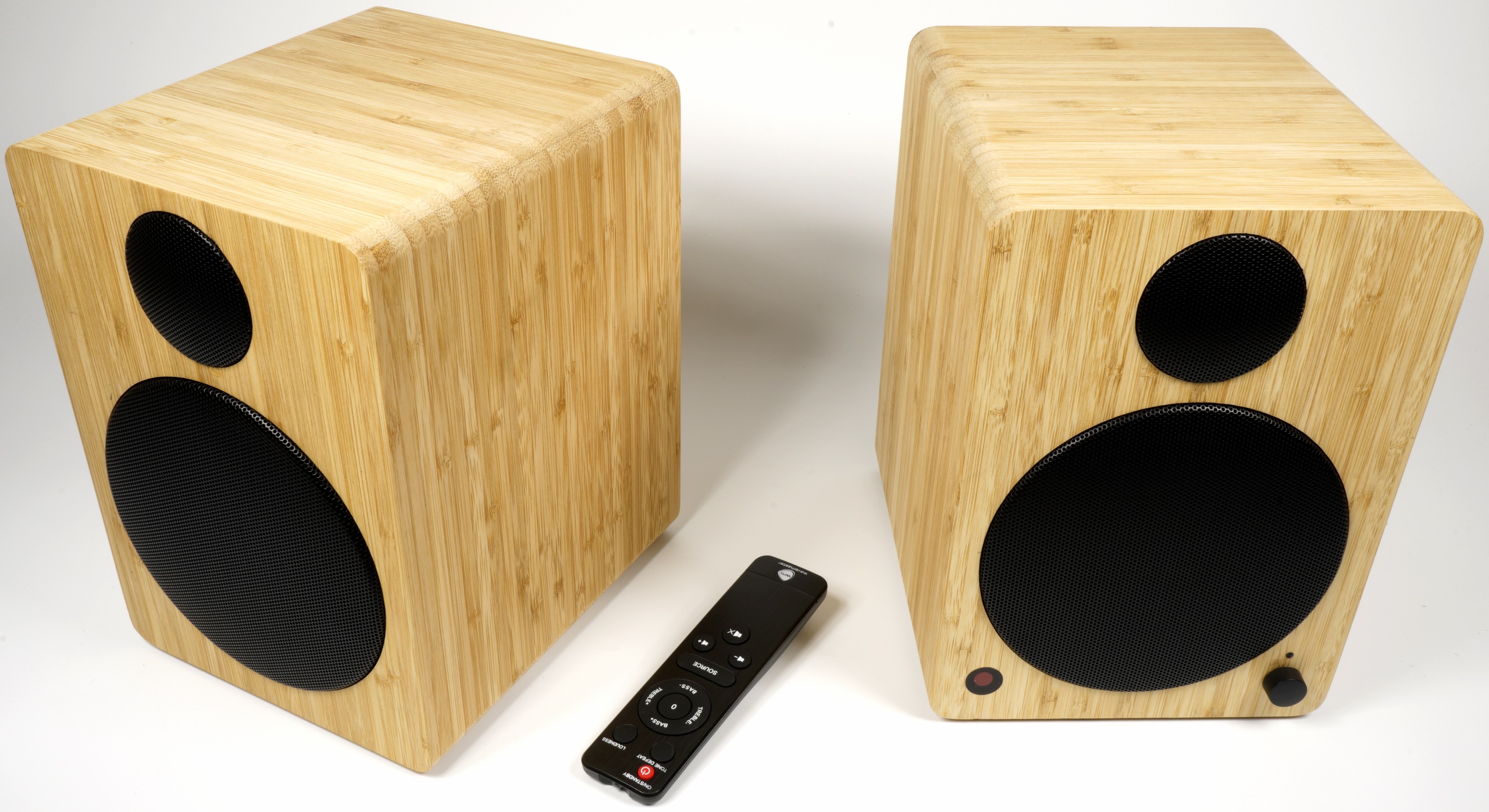
The bass reflex opening is located at the back, which requires a minimum distance of 20 cm to the wall (better more) if one does not want to provoke audible effects under certain circumstances. However, the whole thing can also be dampened a little with two small foam rubber plugs, so that you can then set distances of less than 15 cm. This is especially recommended if these speakers are located on the desk close to the wall or in or in the should be placed on a shelf part.
The back of the left, passive box is completely closed except for the bass reflex tube and clamps, so nothing can be opened without effort. The right box with the amplifier and control unit has a flush-fitted mounting and support plate on the rear, which is fixed with countless wooden screws quite vibration-free and stable. If you connect this system with the RCA cable, you can even change the sides, if it absolutely has to be.
The already glued rubber feet are quite non-slip, but those who want to put the loudspeakers on the shelf have won the zonk. Why not simply attach the things individually and then leave the page selection to the responsible customer later?
Technical data and manual
We have summarized the technical data in a table:
| Speakers |
|
|---|---|
| Principle: | Active 2.0 loudspeaker system |
| Deep/midrange driver | 13cm cellulose cone membrane |
| Tweeter: | 25mm Silk Calotte |
| Crossover: | Passive, LC filter |
| Frequency range: | 45 Hz – 22,000 Hz |
| Output: | 2 x 25 W RMS (approx. 2x 22 to 24 W Sinus continuous tone at 1 KHz) |
| Body: | Bamboo composite material with 0.9 cm thickness |
| Connections: | Digital TOSLINK connector (optical) for stereo signals up to 24 bit/96 kHz, 2 x line-in (3.5 mm and RCA), RCA subwoofer output (mono) |
| Bluetooth: | A2DP standard for wireless digital signal transmission (from BT 2.1) |
| Operation: | Bass/height sound control, switchable loudness and defeat function Infrared remote control for all control functions, control for volume, input selection and manual on/standby circuit (front of the case) Power switch (back of the housing) |
| Weight: | 2520g passive box, 2742g active box (self-measurements) |
| Power consumption: | 0.43 Watt (Idle), 14.8 Watts (average), 46 Watt (Peak) |
| Price |
from approx. 185 Euro street price (RRP 259.95 Euro) |
For the curious, we also have the manual available as a PDF:
CUBE_CUBEmini_neo_manual













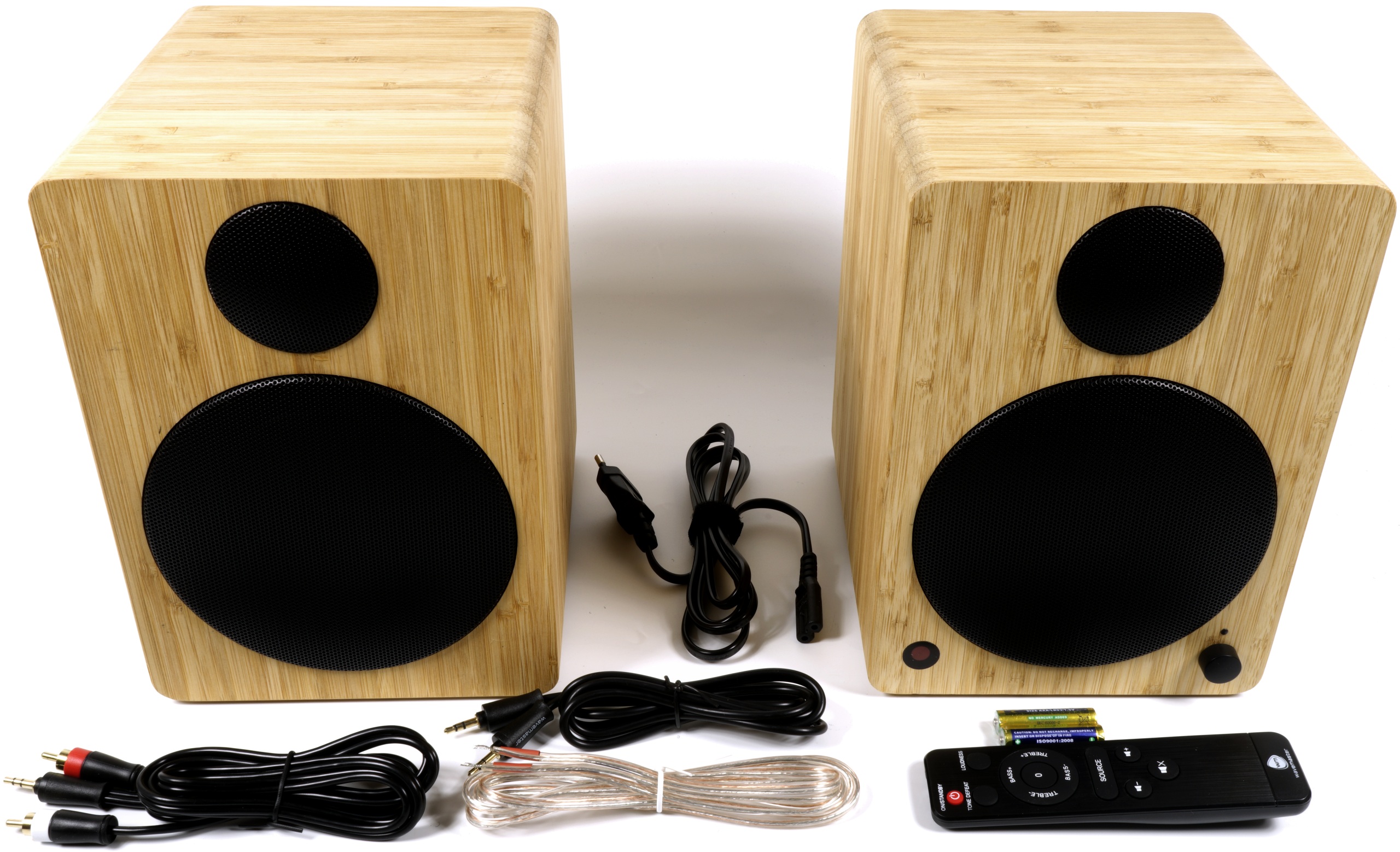

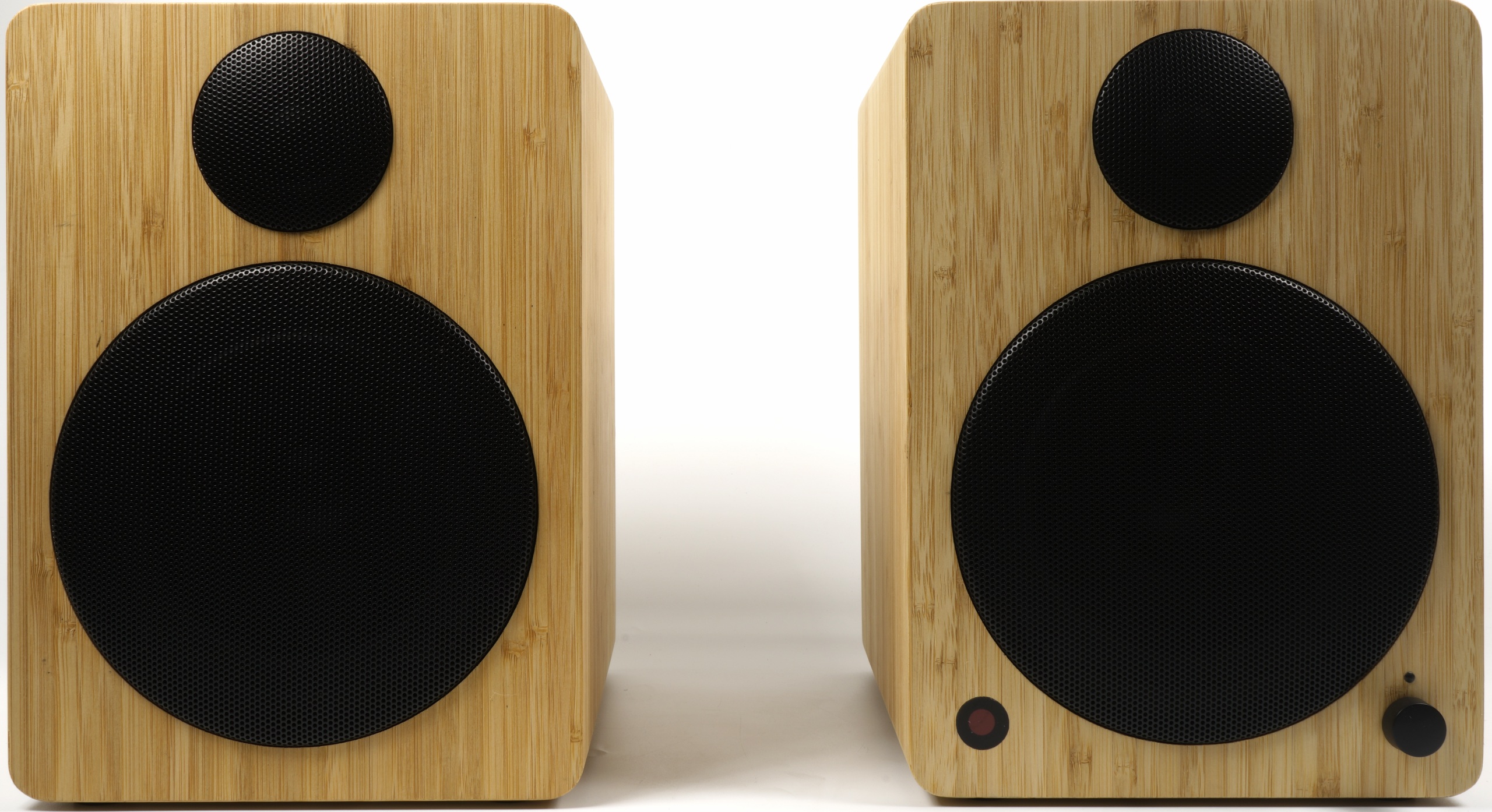
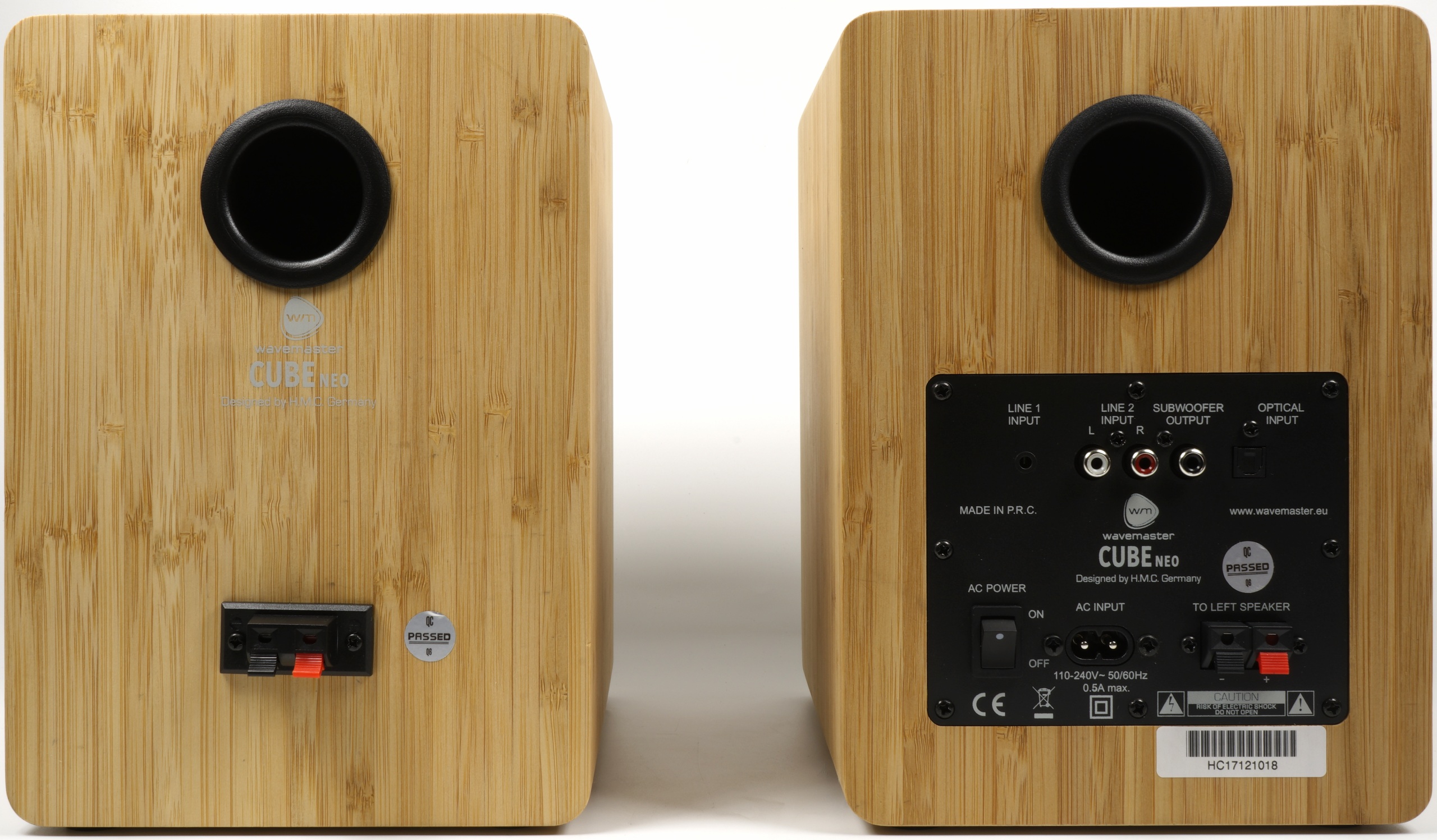
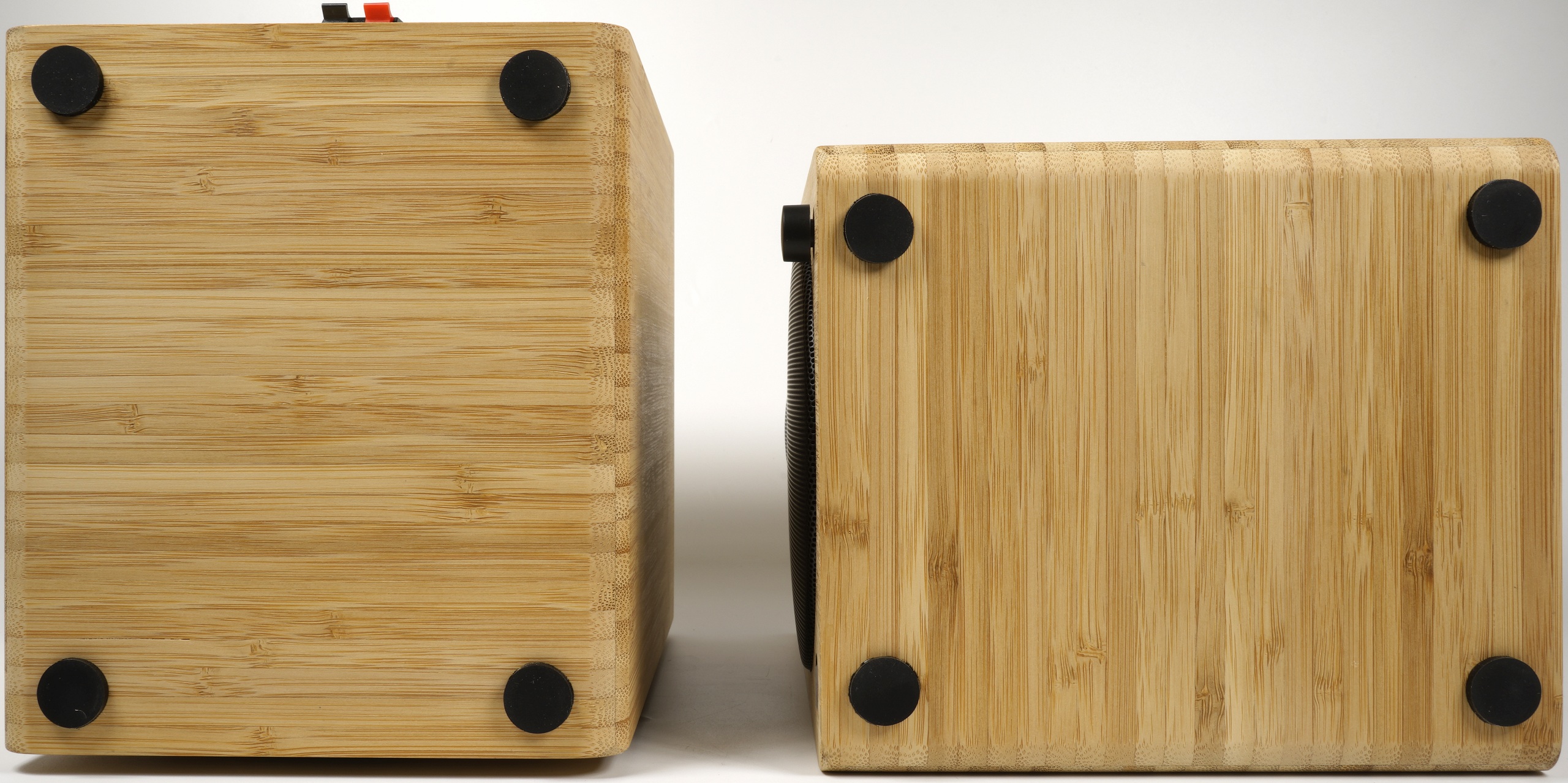



















Kommentieren